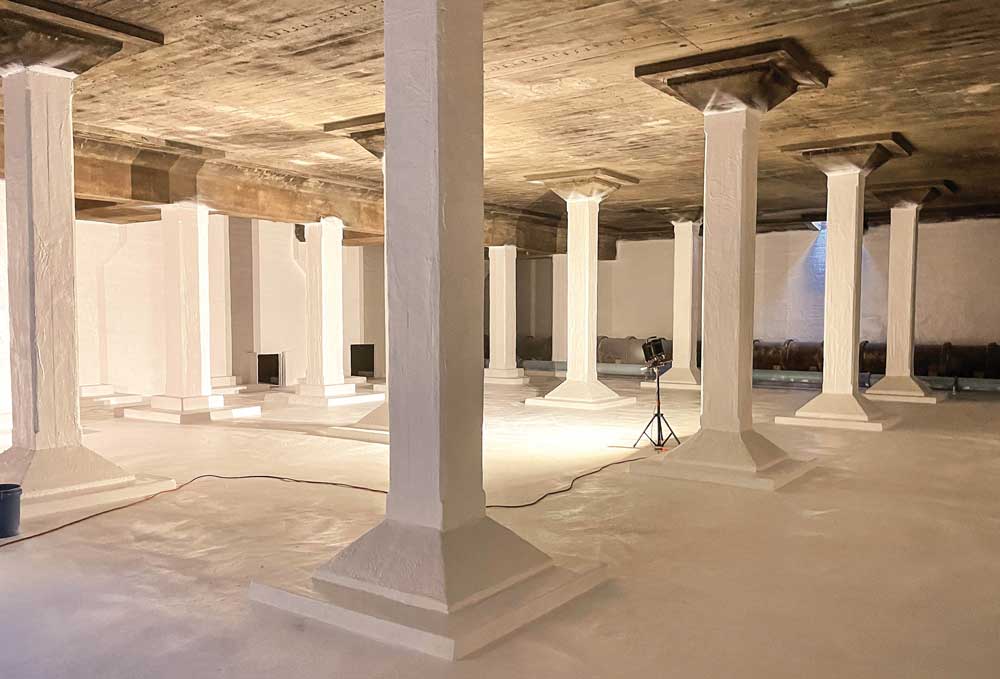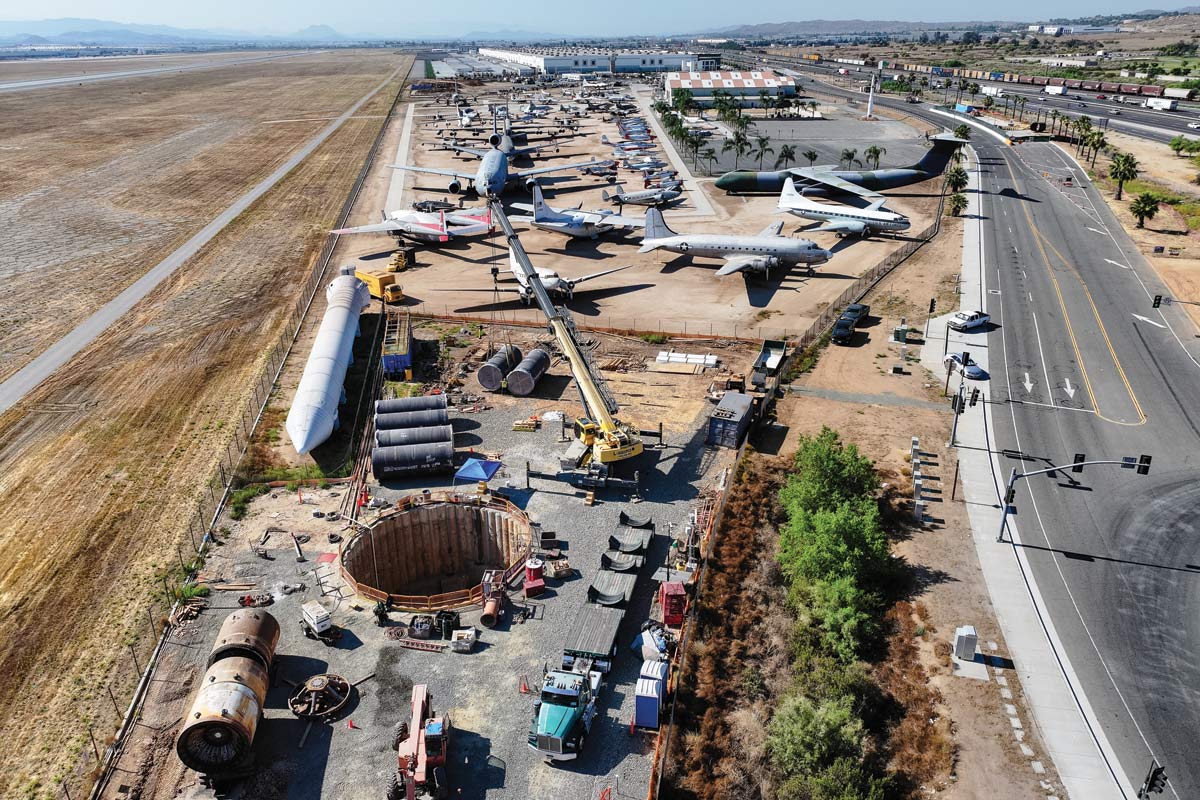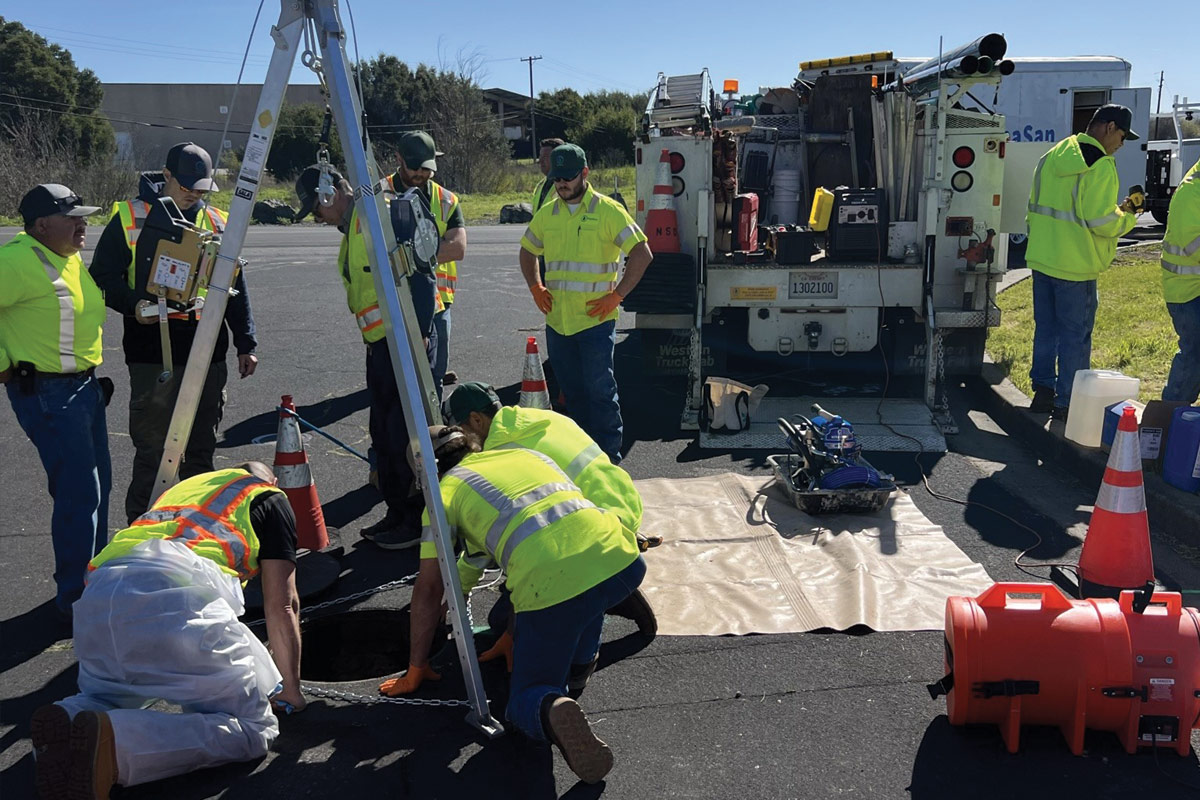
BPA-free Epoxy Restores Critical 90-Year-Old Clear Well at Fort Leavenworth
In 2019, American Water Military Services Group (American Water) contracted a design-build project team to construct a new granular activated carbon (GAC) treatment system for the removal of perfluorooctanoic acid (PFOA) and perfluorooctanesulfonic acid (PFOS) from the water system supplying the U.S. Army Garrison Fort Leavenworth military base in Fort Leavenworth, Kansas — the oldest continuously active military reservation west of the Mississippi and home of the U.S. Army Combined Arms Center.
American Water, the owner, and end-user issued an additional improvements project to update Fort Leavenworth’s existing water treatment plant facilities and assets, including the rehabilitation of a finished water clear well. While assessing the condition of the clear well, American Water identified that it was losing a significant amount of water from the clear well tank while it was out of service through leaks. The 90-year-old tank had begun to leak from the inside out.
RELATED: A Look at New Jersey American Water’s Effective Leak Monitoring Program

Selecting a Trenchless Rehabilitation Solution
With a deep understanding of the clear well’s existing condition, the general contractor proposed 100 percent solids, high build epoxy coatings as a rehabilitative solution and introduced the owner to Warren Environmental’s (Warren) high performance coating system. Warren’s epoxy was determined as the best value long-term solution with the ability to seal the clear well’s existing leaks, protect it from future corrosion and abrasion, and greatly extend its service life — providing the owner with a quality, worry-free end result. With over 25 years of experience with successful epoxy applications, A&W Coatings (A&W), master applicator of Warren’s epoxy system, was subcontracted to apply epoxy coatings to the floor, interior walls, and pilaster columns in the clear well totaling approximately 11,700 sq ft.
The Fort Leavenworth base is a bisphenol A (BPA)-free facility — an industrial chemical often found in polycarbonate plastics and epoxy resins that can cause potential adverse health effects. For this reason, American Water selected Warren’s 501-02 BPA-free epoxy product for the project, certified for potable use and formulated with a BPA-free resin. An added key benefit was the epoxy’s non-hazardous formula, 100 percent free of volatile organic compounds (VOCs) — safe for the surrounding environment and the applicator technicians who would install it.

Rehabilitating with a Value-Add Solution
The project’s scope of work included the surface preparation and coating application of the 77-ft by 66-ft by 14-ft underground clear well tank with Warren’s 501-02 BPA free epoxy, NSF and Water Quality Association certified to ANSI Standard 61. The clear well’s eight small pilasters measuring 1.3-ft by 1.5-ft by 12.5-ft and 14 large pilasters, 1.5-ft by 1.5-ft by 12.5-ft in size, were also slated to be lined. The coating was set to be installed up to the overflow point of the tank at 12.5 ft where the water level would typically sit when holding treated water while in service.
RELATED: Epoxy Coatings Key to Major Rehab Siphon Project
A&W began by pressure washing the concrete at 5,000 lbs per sq in. (psi) to remove the film buildup from the substrate, but the crew determined that this left the concrete substrate too smooth for the product’s optimal adhesion to the surface. To ensure a high-quality application, A&W decided internally to abrasive blast the structure at their own cost, without the influence of an inspector or other representatives on-site. The crew followed by abrasive blasting the concrete to achieve an International Concrete Repair Institute (ICRI) concrete surface profile (CSP) of 4-5 for the epoxy application.
A&W applied 100 mils of Warren’s 501-02 BPA-free epoxy on the interior walls, floor, and pilasters of the clear well in a single coat. The 100 percent solids, single coat system would fully rehabilitate the clear well, preventing it from future leaking, protecting it from corrosion, and extending its useful service life — adding value to its existing condition. The product was sprayed by a six-person crew using a specialized trailer rig outfitted with a Graco XP50 plural component pump system in addition to Warren’s patented equipment. During the coating installation, two technicians spray-applied epoxy simultaneously. The project was completed in three weeks, taking place from Nov. 29 to Dec. 21, 2021. Following the coating installation, the clear well was filled with water and tested in January 2022. No leaks were detected during the testing phase and the clear well is currently in service at Fort Leavenworth.

Keeping Safety Top-of-Mind
To safely enter and exit the tank through the 18-ft drop access point, the applicators used personal fall protection harnesses to reach the work area. To monitor air quality and potentially hazardous gasses within the confined space, a gas monitor was used to monitor oxygen, carbon dioxide (CO2), hydrogen sulfide (H2S), and flammables. Ventilation fans were also used to circulate air, appropriately sized to provide a minimum of six air changes per hour to prevent the clear well tank from becoming oxygen deficient.
Warren’s non-hazardous epoxy formulation was a key safety feature. The 501-02 epoxy coating was free of volatile organic compounds (VOCs), solvents, styrene, and isocyanates, making it safe for crew members to apply the non-hazardous product within the confined space. The epoxy’s lack of solvents also reduced the risk of fire or explosion.

Overcoming Logistical Challenges
As an active military base, the entire Fort Leavenworth site’s restricted access brought several logistical challenges. The crew was required to check in each day to enter the project site’s location and completed a mandatory background check every seven days to maintain access.
RELATED: Epoxy Coating System Serves Low-Risk Solution & Big Results
Overcoming raw materials shortages also became a challenge, impacting the entire coatings industry. Through direct coordination with Warren as the manufacturer, A&W was only delayed a month in receiving materials from the ideal timeline for the coating. This was remarkable at the time because Warren had obtained 100 percent of the raw material allocation coming into the country from Europe for the 501-02 BPA free formulation. As a result, Warren helped the applicator team secure the materials within a restricted timeline to complete the project within the owner’s designated schedule.

Epoxy Coating Offers Comprehensive, Long-Term Solution
Detailed coordination of work activities, a high level of communication with the general contractor, and the benefits of Warren’s single coat epoxy system resulted in timely project delivery. A&W’s three-week completion for the coatings scope of work was especially important to the project’s overall success, enabling the general contractor to get the water treatment plant back online and running at standard capacity within the allotted time frame.
By performing robust surface preparation, installing high-quality epoxy, and overcoming raw material challenges, A&W delivered the owner with a successfully rehabilitated structure proven to last. Not only did Warren’s BPA-free epoxy fix the owner’s initial challenge of stopping leakage from occurring in and outside of the clear well, but it also structurally enhanced the asset and left it in excellent condition while complying with the facility’s BPA-free requirements. Using a minimally invasive solution, the epoxy’s spray lining method resulted in low impact on the existing facility with a small construction footprint — an added benefit of this trenchless technology as opposed to traditional repair or replacement methods involving excavation. The epoxy application ultimately extended the clear well’s useful service life for decades, adding value to the owner’s water treatment system and surrounding community.
Brian Warren is a superintendent at A&W Coatings. Hunter Sansone is a project engineer at A&W Coatings.




